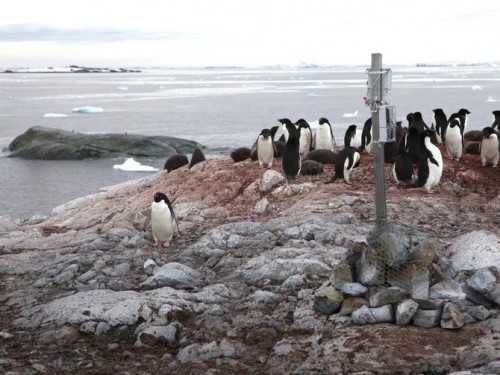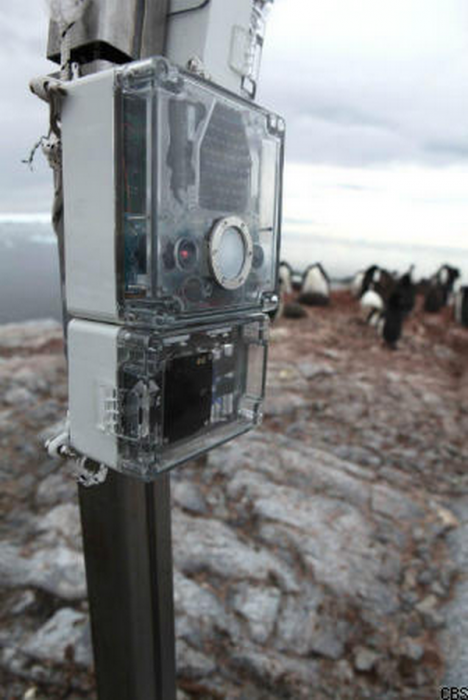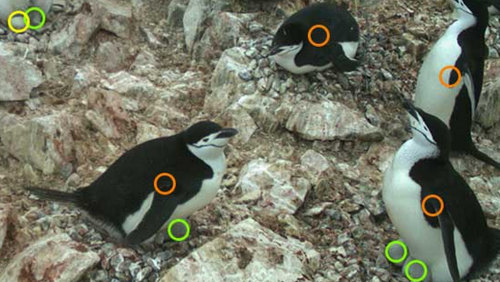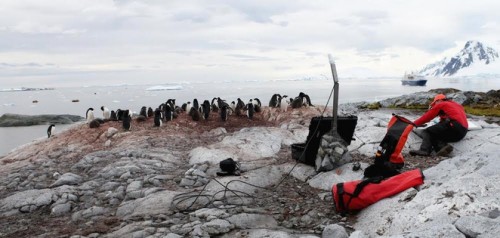| We quite frequently get asked about optimum operating temperatures for the Raspberry Pi – frequently enough that this was a very early addition to our FAQs page back in 2012:
And we left it at that. I hadn’t really thought much about extreme environments for a while – but then I bumped into our friend Jonathan Pallant, from Cambridge Consultants, a couple of weeks ago; and he started telling me about the progress of a project he’s been working on with the Zoological Society of London (ZSL), which pushes the Raspberry Pi’s working temperature down further than any other we’ve seen. How? By the simple expedient of sticking them on poles in Antarctica for a year, in order to monitor penguins. That means the Pis have to work reliably at temperatures which can consistently be below -42°C (-45ºF). And they’ve been coping with those temperatures just fine for a year now.  Image: Alasdair Davies, ZSL The Penguins Lifeline project, headed up by Dr Tom Hart, is a multi-organisation enterprise. ZSL are working with Woods Hole Oceanographic Institution, Oxford University, Oceanites, and Stony Brook University to monitor Adelie penguin populations throughout the year, and to find out how external events like weather and disease, and human influences like pollution and fisheries, affect them. The cameras have been in situ since January 2014 (so very nearly a year’s data has been collected and sent back to researchers by the very cold Raspberry Pis). It’s summer in Antarctica right now, but most places where these are installed will still be well below freezing.  Credit: Alasdair Davies, ZSL The penguins trigger the cameras (there are two in each unit: a regular camera and one with no IR filter for taking pictures in the dark with an infra-red flash – sound familiar?) by moving near them; each unit is equipped with an motion detector. The pictures are then sent to the researchers by the Pi via the Iridium satellite network. Each setup is powered by external lead batteries, which are topped up (when the sun’s out) by solar panels. Researchers count the penguins from the images, and are able to track when they arrive to breed, and monitor populations. In previous studies, a human would have to go out to the camera installation and pick up the data by hand: networking the cameras, using Raspberry Pis, means that this doesn’t need to happen any more. There are a few ways in which you can help Penguins Lifeline. The researchers are crowdsourcing some of the work that needs doing in classifying images: the pictures the project is creating need sorting to establish how many adults, chicks and eggs are visible in each.  Orange circles identify adults, green circles chicks, and yellow circles eggs. 804,303 images have been classified so far, but there are plenty more to help sort. You can also make a donation. Adopting a colony will help fund the placing of more Raspberry Pi cameras in remote regions to monitor penguin populations. You can read much more about the project over at the Penguin Lifelines site. And because we think penguins are brilliant, here are a couple more pictures.  Setting up. Credit: Alasdair Davies, ZSL  Credit: Alasdair Davies, ZSL |
A Semi-automated Technology Roundup Provided by Linebaugh Public Library IT Staff | techblog.linebaugh.org
Monday, December 22, 2014
Penguin Lifelines
Subscribe to:
Post Comments (Atom)
No comments:
Post a Comment